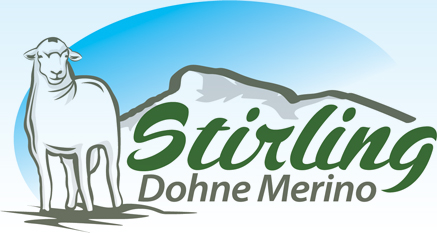To View Full Report and Graphs – Click Here
ABSTRACT – Theory’s
- Kleibers Metabolism Theory says that bigger animals have a lower metabolism per unit weight by a factor of 75%.
- It is often assummed that this supports increased size efficiency and so for this presentation I introduce two approximates to level this claim.
- The Rogerson Production Approximate says for every 10-fold decrease in size conversion efficiency doubles in grazing mammals.
- The Rogerson Reproduction Approximate says for every 10-fold decrease in size fecundity doubles in grazing mammals.
- This means that a 600kg cow has 75% of the metabolic cost per kilo as a 60kg ewe, but twice the feed conversion cost of 8-1 against 4-1 and half the fecundity rate with 1 per year against 1.3 every 8 months.
ABSTRACT – Algorithms
- An algorithm is the guiding rule of the calculation.
- An index compares value over time.
- The OVIS algorithm is a calculation with complete linkage of progeny’s record to progeny co-relatives, trait co-relatives, flock and year co-relatives and genomics co-relatives, involving thousands of calculations for each individual.
- The Stirling Accrued algorithm is a calculation complete with index, but only 1 dam linkage which influence diminishes yearly as the progeny proofs her own figures.
Stirling Birth Records Accuracy levels
SCANNING
- 289 ewes joined and scanned 1,2 and 3.
- 36 [12.5%] scanned dry.
- 103 [35.5%] scanned single
- 138 [48%] scanned twin
- 12 [4%] scanned triple.
- 415 [144%] total lambs scanned.
DAY OF BIRTH TAGGING
- 336 [116%] tagged; live at birth.
- 25 [9%] not tagged; dead at birth
- 36 [12.5%] missing presumed aborted
- 3 [1%] presumed aborted not correctly reported
- 4 [1%] wet ewes with no record
- 10 [3.5%] dead ewes [5 twin scan]
- 1 [1%] no record.
- 415 [144%] total
35 DAY MARKING
- 296 [102%] tagged at birth lambs marked
- 40 [14%] tagged at birth lambs missing presumed dead.
100 DAY WEANING
- 286 [99%] lambs weaned
- 10 [3%] lambs missing presumed dead.
As can be see the difference between scanning and day-of-birth recording is 28%.
The difference between scanning and 35 day marking [6-week mothering ] is 42%.
My last 5 years of records contain the same accuracy levels if required.
MEASUREMENT SYSTEMS USED
- Actuals – Dam Wean Weight, Progeny Wean Weight, 2017 NLW, Lifetime NLW.
- Genotypic, ASBA, OVIS, (traits) NLW, MWWT, WWT.
- Phenotypic – Meat Production Percentage, yearly daily wean ratio; lifetime (Stirling Accrued) daily wean ratio.
Daily Wean Ratio is the weight of ewe divided by the weight of lamb at weaning and adjusted to 100 days. At Stirling this is also accrued from season to season as a multi-year figure and from generation to generation as a single year figure to become Accrued Daily Wean Ratio.
TWIN LAMB SYNDROME
- By February 2016 with only one measurement entry, that of Wean Weight, ST150020’s ASBV YCFW has already been discounted by 3 percentile, meaning that the O.V.I.S, Algorithym is incorporating the Wean Weight trait into the YCFW trait before indexing. YCFW is no longer a trait, it is an index.
- By separating the entry dates of the June Body and Wool weights we could ascertain whether the PWWT trait is also influencing the YCFW trait causing yet further deterioration of the trait’s value.
- If l were the AWI, l would also withdraw funding until this basic flaw is corrected.
OTHER SHOW ISSUES – WOOL
- No Wool Production Percentage figures available but they will be available this time next year to compare.
- Anecdotally YCFW has become as inaccurate as NLW since changing to 250 day measurement for quantity but still retains quality accuracy.
- Lower age measurements brings growth rate influence into what should be purely a wool trait. i.e indexed before indexing
- WPP may sought most of this problem even at 250 days.
OTHER SHOW ISSUES – MUSCLE
- Loin depth measurement is not highly heritable and improvement is very slow.
- Anecdotally phenotype is more highly heritable.
- Three other areas of equal importance are loin length or area and butt depth and width.
- Consider changing to inter-muscular fat scanning.
CONCLUSIONS
- This presentation concentrates on wean weight and number.
- Show direction has a high potential influence on breed direction.
- OVIS heritability remains inadequately tested.
- OVIS group traits show little correlation to actuals.
- OVIS individual trait variation with actuals can appear extreme.
- OVIS pursuance of increased growth and adult weight is extremely antagonistic to reproduction (NLW) and production (efficiency).
RECOMMENDATIONS
Dohne Council
- Council discuss breed measurement future pathways for adult weight, wool, muscle and NLW.
- ASBV AWT, measure actuals at 2 years or weaning and incorporate with OVIS.
- ASBV YCFW, use WPP at 250 day measure cycle and incorporate with OVIS.
- ASBV EMD, investigate EMA ability to incorporate loin or body length.
- ASBV NLW, discard actual NLB and replace with actual NLW.
Show Committee
- Only measurement perusal method to be used by judges.
- All pen cards to be displayed in percentiles only.
- ASBV NLW should not be used and ASBV YCFW should be reviewed with WPP figures.
- Judge objectively for curve bending figure not weight figure, i.e WWT divided by AWT.
- Judges be advised that standard accuracy variation be + or – 30 percentile points.
